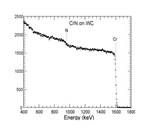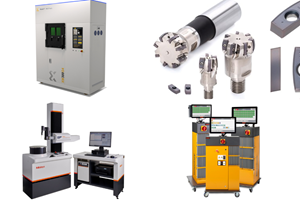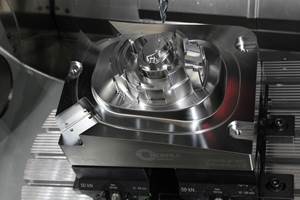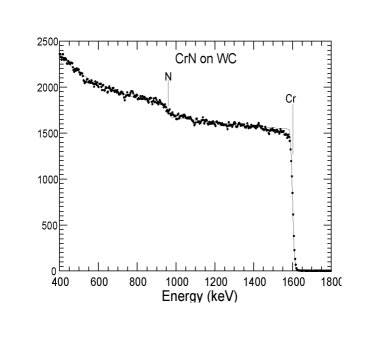How to Control Excessive Tool Wear
By calculating feeds and speeds properly, moldmakers can reduce tooling costs, have less machine downtime and see less scrap due to worn tools.
Have you ever stopped to notice that in the machining trade we always seem to be trying to solve one problem or another? A big problem that many wrestle with is "How do I make my tools last longer?" Let's face it, expendable tooling is a real expense that everyone needs to watch closely or the job profit goes right down the drain!
After a considerable amount of trial and error, it was finally discovered that it wasn't the material being cut or the machine being used that was "eating" the tools up - it was the user. Some machinists don't pay attention to the basics, but just randomly apply a spindle speed and feedrate that sort of look right. Big mistake.
After studying exactly what goes on when material is cut, you will discover a much more complex operation than expected. There is a tremendous amount of physics and chemistry involved in machining, as well as thermal effects, mechanical effects, resulting stress forces, etc.
While this sounds like it is getting way too complicated, there is an easier way. It's called calculating the speeds and feeds using the industry standard formulas. They are easy to use and will give you better tool life. This is one of the most misused and abused items seen in applications. Most people are programming their speeds and feeds too far off the mark - usually too slow - and causing excessive wear. If your tool is not cutting, then it is rubbing and causing more heat. Heat is the killer of the tool's cutting edge. Also, using the wrong surface feet will drastically affect the tool life.
The Machinist's Handbook is a good source of data to find out what is the recommended starting feeds and speeds for a particular type of cut in a particular type of material.
Surface Feet Per Minute
Let's take these issues one at a time. First, let's consider surface feet per minute. Do you really understand it? Imagine a circle that measures exactly 12" on its circumference. Next, visualize a point on the circle at three o'clock. Now rotate that circle one complete revolution in 60 seconds. How much material passed the point at three o'clock? If you were to break the circle and straighten it out into a line, it would measure 12". Therefore, you have turned the circle at one surface foot per minute. If you were to turn the circle two revolutions in 60 seconds, then you would now have turned the circle two surface feet per minute, or in other words, 24" of material would have passed the three o'clock position.
Notice that if the diameter goes up and the rotation speed remains the same, the surface feet per minute also rises, and if the diameter goes down at the same rotational speed, the surface feet also goes down. What does that mean? Don't you run large diameters at a slower rpm and small diameters at a higher rpm? Now you know why.
The recommended surface feet per minute for any given material can be looked up in various metal cutting manuals. A lot of tool manufacturers also can supply valuable data. You only need to ask.
RPM
You can calculate your rpm using the following formula:
rpm = (sfm x 12)/(dia x Pi)
For example, the recommended sfm for 17-4ph using a general C2 carbide grade is 200 surface feet per minute. How fast should you run a .750" diameter bar stock or endmill?
rpm = (200 x 12) /(.750 x 3.141592654)
= (2,400) / (2.35619449)
= 1,018 revolutions per minute
There are shorter formulas, but they have built-in errors. Be precise in your calculations.
Feedrates
What about feedrate? Feedrate is nothing more than how far the tool traverses for each tooth or cutting edge of the tool. This is commonly called the chip load. What is the thickness of the chip formed by the combination of the spindle turning and the tool advancing? In millwork, a traverse rate of inches per minute is normally used, and for lathes, inches per revolution is the norm. Although all of the concepts related in this article will apply to lathes or mills, this formula is for mills.
Feedrate = rpm x chip load x number of cutting edges
Example: .750" diameter four-flute endmill for 17-4ph rough contour cut.
Feedrate = 1,018 x .006 x 4
= 6.108 x 4
= 24.43 inches per minute federate
Coolant
One last item of importance is the coolant. You can't talk about extending tool life without mentioning the proper mixing of the coolant.
If you are using a device that mounts on your coolant concentrate barrel and is connected to a water hose, then you are in good shape. If, on the other hand, you use the five-gallon bucket method, you might have a problem and not know it. Do you pour an inch or so of the concentrate into the bucket and then fill the bucket with water? If you do, you just threw away about 75 percent of the heat dissipation and lubrication properties of your coolant. The concentrate will not emulsify properly by adding the water to the coolant concentrate.
Always pour the coolant concentrate into the water. Never pour the water into the concentrate. You will be amazed at the tool life and surface finish improvements.
So, calculate your feeds and speed and mix your coolant properly and you can reduce your tooling costs, have less machine downtime, and possibly see less scrap due to worn tools or bad coolant. That translates into higher profit margins.
Related Content
How a Small Programming Change Cuts Cycle Time in Half
Overriding the CAM system when milling a series of lifter pockets helps to improve metal removal rate and increase feed rates.
Read MoreProducts and Services for Multiple Moldmaking Needs
New year, new technology roundup! Featured here is a collection of product offerings, from profile milling cutters to industry-specific CAD/CAM software to innovative hot work tool steels.
Read MoreThree Ways to Accurately Machine Hardened Mold Materials
Three cutting tool design considerations to improve process reliability and cost efficiency when deep-hole drilling molds.
Read MoreTen Things You Need to Know about Circle Segment Milling
Considerations for evaluating if circle segment end mills or conical barrel cutters are right for your mold machining applications.
Read MoreRead Next
Laying It on Thick With Specialized Coatings
Phygen coatings offer low friction, high hardness and exceptional wear resistance to extend tool life.
Read MoreHow to Use Continuing Education to Remain Competitive in Moldmaking
Continued training helps moldmakers make tooling decisions and properly use the latest cutting tool to efficiently machine high-quality molds.
Read MoreHow to Use Strategic Planning Tools, Data to Manage the Human Side of Business
Q&A with Marion Wells, MMT EAB member and founder of Human Asset Management.
Read More










.jpg;maxWidth=300;quality=90)










